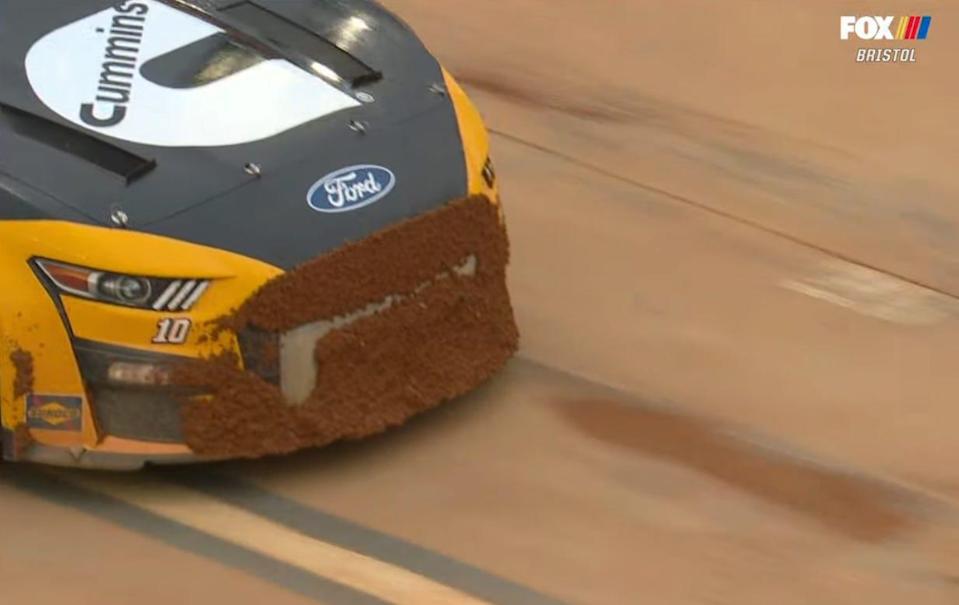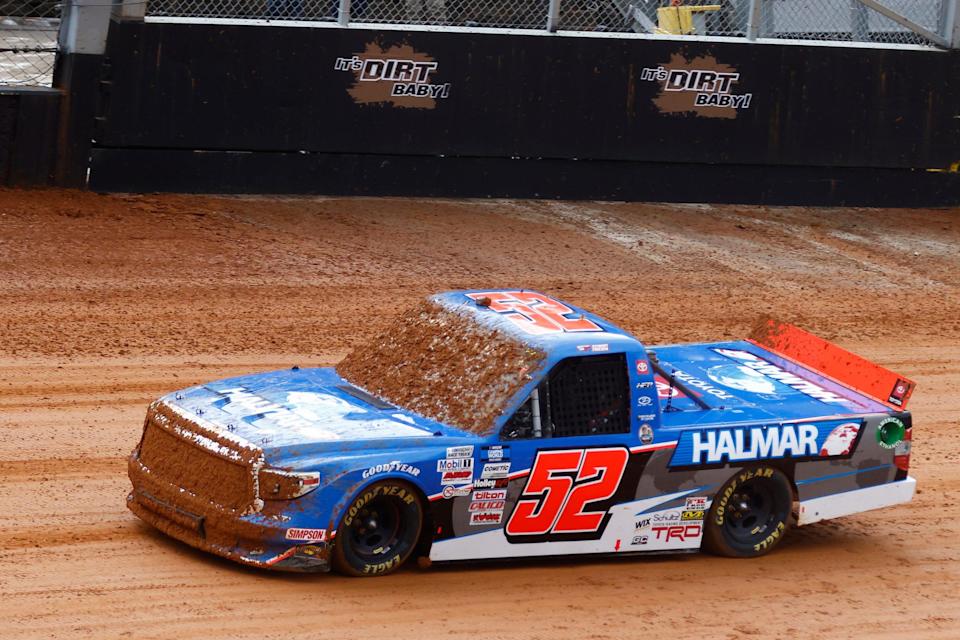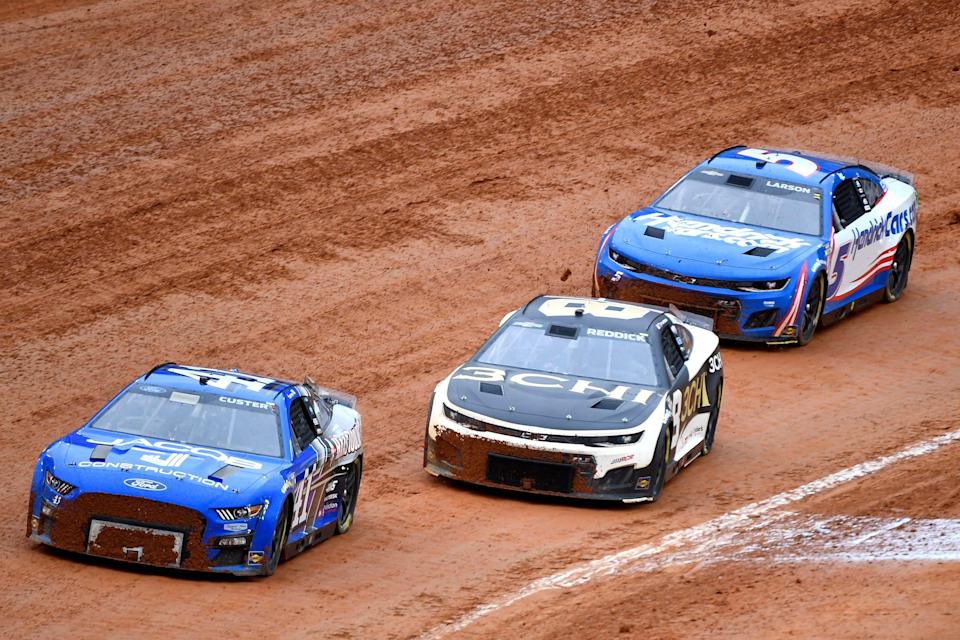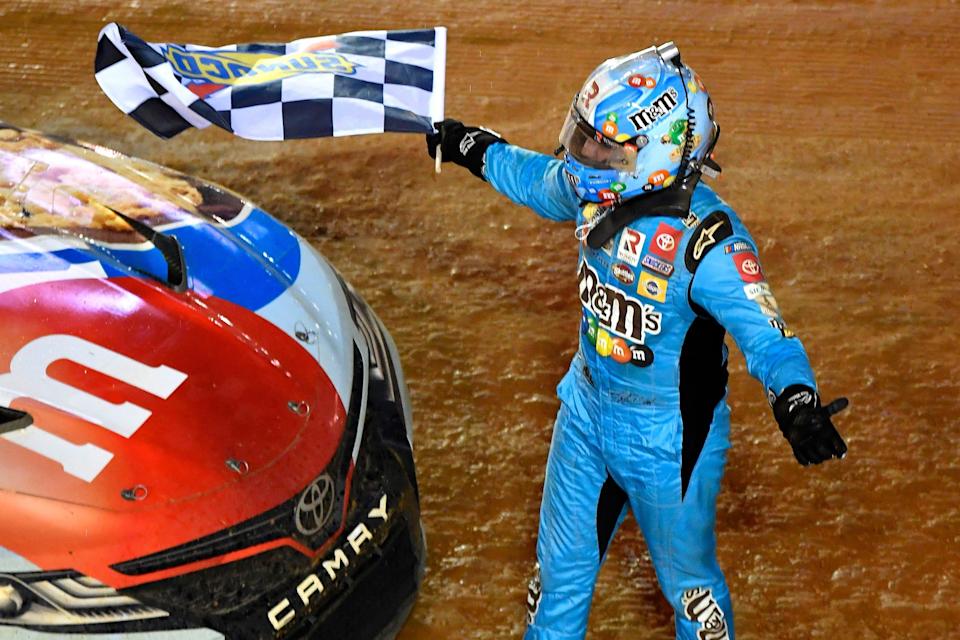
-
NASCAR held its annual dirt race at Bristol Motor Speedway.
-
The race had a thrilling finish, but drivers complained that their cars were not designed to run on dirt and mud.
-
Several veteran drivers are against the race, including Kyle Larson, arguably the best dirt racer in the world.
NASCAR’s annual gimmick — the Bristol dirt race — was both exciting and terrible, and several veteran drivers just want it gone.
Kyle Busch picked up his first win of the year when leaders Tyler Reddick and Chase Briscoe bumped and spun on the final lap. Busch was able to dart by from third place for the checkered flag.
That finish saved what was otherwise a race that couldn’t seem to get out of its own way.
One year after the debut race saw many of the top drivers wreck out, this year’s event featured 12 cautions. The first came in the first 15 laps, when organizers had to stop the race to get the mud off the cars’ grills.


This was reminiscent of the 2021 NASCAR Trucks heat race, which had to be stopped almost immediately to clean the windshields.


Veteran driver Kevin Harvick was not happy about the track conditions.
“The first thing I can tell you is we did a terrible job prepping the track and full of mud, and there was nobody here to pack the track, so we all look like a bunch of bozos coming in to pit because we don’t know how to prep the track,” Harvick told NBC after wrecking out of the race.
Later, the race had a wreck during a caution, when a car just started slipping down the track when it began to rain.
Cup cars are not designed for dirt, and that makes setting up the track nearly impossible
The idea of a NASCAR dirt race is fun and does occasionally make for good television. The problem, however, is that Cup Series cars are big and heavy and simply not designed to be run on dirt.
That starts with the windshields.
“The way I look at it is, if we’re not going to take the windshields out, then why are we racing on dirt?” Kyle Larson stated on SIRIUS XM NASCAR Radio before the race. “We just shouldn’t race on dirt if we’re not going to take the windshields out and actually have a dirt race.”
The pivotal factor for such races centers around the moisture in the track. Too little and the track gets dusty, leaving just one fast lane with minimal passing. Too much and the track gets muddy, leaving windshields and grills covered in mud. Removing the windshields would help that issue as drivers can more easily clean a helmet visor than a windshield.
This was a point echoed by Joey Logano before Bristol, noting that cars built to race on dirt don’t have windshields.


Busch noted that removing the windshields might help, but at the end of the day, the cars are too big, and drivers spend the entire race just trying not to wreck instead of racing.
“[Getting rid of windshields] is fine, but the cars are 3,500 pounds,” Busch said after the race. “You saw what it’s like on the last corner, the last lap, to drive around here every single lap. You are on edge, on your toes, just trying not to crash every single lap. When you’re in a dirt car, I’ve now run micros, dirt late models, a few different types of vehicles on dirt. When there’s grip, it’s grip and rip. You are driving the heck out of that thing. Makes you breathe hard. This thing here, you’re just not breathing because you’re so tensed up of not crashing.”


The best drivers in the world prefer to get rid of the dirt race
Larson, the defending NASCAR champion, is arguably the best all-around driver in the world and regularly runs in mid-week dirt races; yet he wants the Bristol dirt race gone too.
“I think everybody assumes my opinion would be, ‘Oh, let’s race dirt every weekend!'” Larson said before the race. “But I don’t think Cup cars should be on dirt. That’s the only change I would make [to the schedule], is not race on dirt.”
Busch agreed before the race, saying, “Cut the cord.”
Busch also cited previous comments from NASCAR legend Richard Petty, who said the dirt race is too nostalgic.
“I guess I’m looking at it from an old-time deal because we spent years and years and years trying to become a professional sport,” Petty said in 2020, via Racing News. “Years and years to get away from that stigma. But dirt-track racing is not professional, so we’re going backward. It would be like taking a professional football team and going back to play at a high school field.”
Read the original article on Insider
